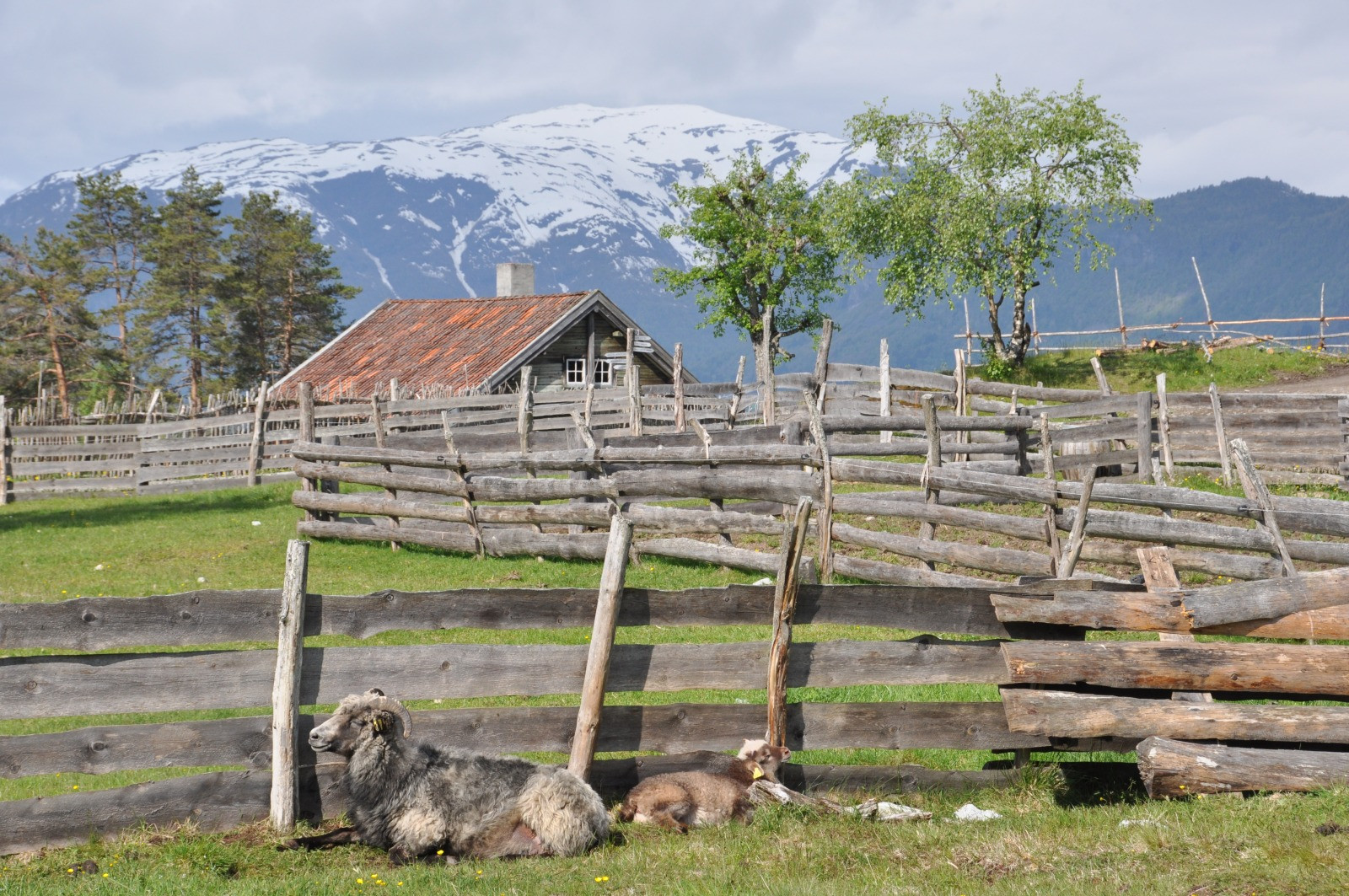In Sogn, people have traditionally lived off and with the landscape and nature. From subsisting on hunting and gathering, people transitioned to a more settled lifestyle and began farming around 4000 BCE. However, it took approximately 1,500 years before agriculture became a significant livelihood in the areas along the Sognefjord.
Human ways of living have greatly influenced how the landscape is used and shaped. When people started keeping livestock and cultivating the land, they gradually began altering the surrounding nature through activities such as grazing, mowing, and pollarding. Additionally, parts of the land were used as fields for growing crops. Thus, what was once natural terrain transformed into what we now refer to as semi-natural habitats and cultural landscapes.
Shaping a Museum Landscape The current museum area of The Heiberg Collection is located on land that was previously part of the uncultivated area of the Vestrheim farm, as well as two tenant farms under it. Before the museum was established, the landscape consisted of pine forests, marshes, and small lakes, but also traces of agricultural activity such as grazing, meadows, and pollarded trees.
When it was decided to move the museum from Amble Farm to its current location, architect Arne Berg developed a plan for both the buildings and the landscape. In Berg’s plan, the historic buildings were grouped into three clusters representing the geographic divisions of Inner, Central, and Outer Sogn. In this way, the museum could showcase the variety of architectural styles along the Sognefjord, from Eastern-style lofts, timbered barns, and Akershus-style house forms in the inner fjord, to frame-built and stone buildings further out. Similarly, the landscapes within these clusters were to include elements of cultural landscapes that demonstrated how people on farms had sustained themselves in the pre-industrial agricultural society.
Types and Elements of Cultural Landscapes Since the museum grounds began development, great emphasis has been placed on creating a diverse cultural landscape that represents what could be found in the pre-modern agricultural landscapes along the Sognefjord.
Already in the 1970s, when the museum area was planned, the cultivated areas around the farm clusters were included in the plans. From the beginning, the focus was on ensuring that the cultural landscape provided the proper context for the clusters and buildings, as comprehensive and accurate as possible. In practice, this means that the museum area was designed to include a wide variety of cultural landscape types, with plant and animal life playing a crucial role in making it functional.
As a starting point for working with the landscape, a management plan was written in 1990 (Austad and Aaraas, 1990). A full-time museum farmer was hired, while seasonal staff made up a household in the Inner Sogn cluster.
The National Museum Network for Cultural Landscapes Under the direction of the Directorate of Cultural Heritage, 22 different specialized museum networks have been established across the country, each operated by a main responsible museum.
The Heiberg Collection – Sogn Folkmuseum is the main museum responsible for the National Museum Network for Cultural Landscapes. As such, we are tasked with ensuring the quality and continuity of the work, coordinating research projects, and organizing network gatherings.

